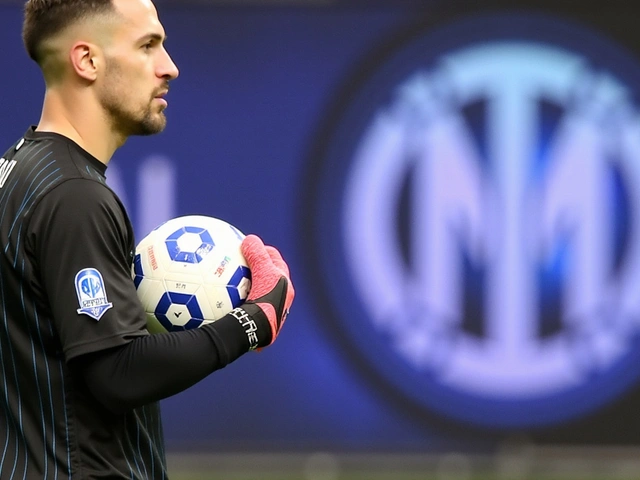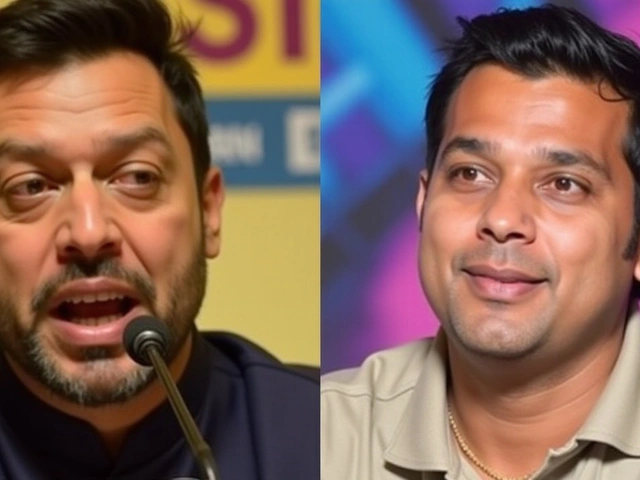
When Geeta Gandbhir, the documentary filmmaker behind the buzz‑worthy Netflix release, unveiled The Perfect Neighbor last month, the streaming giant’s Top 10 Movies chart turned into a battlefield. The film follows the June 2, 2023, shooting of Ajike ‘AJ’ Shantrell Owens, a 35‑year‑old Black mother of four, by her white neighbor Susan Lorincz in Ocala, Florida. After debuting at the 2025 Sundance Film FestivalPark City, Utah, the documentary claimed the No. 1 spot on Netflix for a full week before being unseated by an apocalyptic new film from Kathryn Bigelow. Here’s why that shift matters.
Background of a Neighborhood Tragedy
The roots of the tragedy run deep in a quiet suburb where a single‑family home sat next to a vacant lot. For months, Lorincz peppered 911 calls with complaints about children—most of them Black—playing near her driveway. Those calls weren’t just noise; they built a record that later became a cornerstone of her defense under Florida’s Stand Your Ground law. On that fateful June afternoon, the tension escalated, and Lorincz fired a handgun that killed Owens, who was merely walking home with her youngest son.
Police body‑camera footage, the only visual evidence in Gandbhir’s film, shows the frantic moments before the shot—no narration, no talking heads, just raw, unsettling reality. The footage has been described by critics as a “real‑life horror movie,” because the terror comes from everyday surveillance, not special effects.
Making of the Documentary
Gandbhir’s connection to the case is personal: Owens was the best friend of the director’s sister‑in‑law. That bond drove her husband, producer Nikon Kwantu, to travel to Ocala in early 2024 and begin gathering publicly available police videos, doorbell recordings, and court documents. Executive producer Soledad O'Brien helped secure the necessary clearances to use the footage without any reenactments.
According to the Los Angeles Times, Gandbhir wanted the audience to feel the claustrophobia of a neighborhood dispute turned deadly, so she stripped away traditional documentary devices. The result is a 92‑minute march of surveillance clips that forces viewers to draw their own conclusions about race, fear, and self‑defense laws.
Release, Reception, and Numbers
The film’s world premiere at Sundance on January 24, 2025 earned Gandbhir the Directing Award, a rare honor for a documentary that never shows a face on screen. After a brief run at South by Southwest on March 9, the movie landed a $5 million acquisition deal with Netflix in February, finalized in March.
Netflix launched the documentary globally on October 17, 2025. Within three days, it racked up 16.7 million views, propelling it to the top of the Top 10 Movies chart on October 24. Critics praised the unflinching approach: TIME called it “a hauntingly powerful experience that keeps you on edge from start to finish.” Collider noted its “deeply disturbing” nature, while the New York Times highlighted the film’s exploration of “how a community dispute escalated into a deadly tragedy.”

The Netflix Chart Battle
But the reign was short‑lived. On October 31, the chart’s No. 1 spot fell to an apocalyptic thriller directed by Kathryn Bigelow, the Oscar‑winning mind behind The Hurt Locker. Details about the competing film remain scarce, but the shift sparked conversation about audience fatigue: two consecutive weeks at the top were claimed by heavy‑weight, doom‑laden stories.
Collider observed that Netflix’s top‑chart “has been frighteningly relevant in recent weeks,” with titles ranging from animated K‑Pop action to grim documentaries. The pattern suggests viewers are gravitating toward content that feels urgent, even if it’s uncomfortable.
Broader Implications: Race, Law, and Media
Beyond the streaming numbers, the documentary reignites debate over Florida’s Stand Your Ground law. While Lorincz was convicted of manslaughter and sentenced to 25 years, her defense team argued the law justified her fear. Legal scholars say the case underscores how the statute can be weaponized against minority communities.
Gandbhir herself said in a post‑premiere interview that she hoped the film would “force a conversation about who gets to claim safety and who is labeled a threat.” The use of only police and doorbell footage strips away any editorial framing, leaving the audience to confront the raw power dynamics at play.

What Comes Next for the Film and the Conversation
Netflix has slated a limited theatrical re‑run in select cities for March 2026, aiming to spark community screenings and panel discussions. Activist groups in Ocala plan a memorial walk‑out on the anniversary of Owens’ death, hoping to keep the spotlight on systemic issues highlighted by the film.
Meanwhile, the production team is reportedly developing a follow‑up series that will examine other cases where Stand Your Ground has been invoked. If the buzz around The Perfect Neighbor is any indication, the conversation is far from over.
Frequently Asked Questions
Why did Netflix remove the documentary from the top spot?
The documentary was overtaken when Kathryn Bigelow’s new apocalyptic film entered Netflix’s Top 10 Movies chart on October 31, 2025. The shift reflects fluctuating viewer preferences toward high‑stakes, genre‑driven content.
What legal precedent does the film reference?
The documentary spotlights Florida’s Stand Your Ground law, citing the 2024 manslaughter conviction of Susan Lorincz as a key example of how the statute can be applied in self‑defense claims.
Who were the main people involved in producing the film?
Director Geeta Gandbhir co‑produced with her husband Nikon Kwantu. Executive producer Soledad O'Brien and acclaimed nonfiction filmmaker Sam Pollard also contributed.
How did audiences react to the film’s use of only body‑camera footage?
Viewers described the experience as “unsettling” and “like watching a real‑life horror movie.” Critics praised the technique for forcing audiences to confront the events without narrative cushioning.
What future projects are being planned after this documentary?
Gandbhir’s team is developing a limited‑series that will explore additional cases involving Stand Your Ground claims across the United States, aiming to broaden the dialogue sparked by the documentary.
8 Comments
Sathish Kumar
November 3 2025
When truth is shown without a narrator, we see the world as it is. Simple facts can be louder than any commentary. The film lets the silence speak.
Mansi Mehta
November 11 2025
Oh great, just when we thought we’d get a break from doom, we’re handed another heavy‑handed thriller. Nothing like a little “apocalyptic” drama to remind us that real life is already terrifying enough.
Bharat Singh
November 19 2025
Doc is raw, watch it. 🔥
Disha Gulati
November 27 2025
Honestly, this whole "Netflix top ten" drama is just a front for the elite to distract us from the real agenda.
They push a big‑budget apocalypse movie right after a hard‑hitting documentary to keep our attention on fantasy instead of facts.
The documentary itself is a mirror, showing how Stand Your Ground laws are a weapon against minorities.
But the streaming giant knows that if you make people uncomfortable, they’ll switch to the next big spectacle.
It’s not a coincidence that the apocalyptic film is directed by a Hollywood veteran with deep ties to the defense industry.
All those drones and city‑scapes? Think about who profits when society is scared.
Meanwhile, the victims of real violence get buried under hashtags and fleeting clicks.
The algorithm is designed to feed us what it thinks we want, not what we need to hear.
Every time we watch a doc like “The Perfect Neighbor”, the platform gets a boost in “social responsibility” points.
Then they yank it down and replace it with a blockbuster that glorifies destruction.
This cycle keeps us from demanding policy change because we’re too busy binge‑watching.
Even the promotional material for the apocalypse film hints at “saving humanity”, which is a weird choice after showcasing how humanity is already being torn apart.
Someone should ask why the budget for the doc was $5 million while the apocalyptic flick got double that.
Maybe it’s just market forces, but market forces are steered by the same power structures that wrote the Stand Your Ground statutes.
So keep your eyes open, because the biggest threat isn’t the film on screen, it’s the silence that follows.
Sourav Sahoo
December 5 2025
It’s heartbreaking to watch that footage and feel the weight of every silent bystander. The camera doesn’t lie, and the viewer can’t pretend the screams aren’t echoing in their own living rooms. This isn’t just a story; it’s a call to action that reverberates far beyond Ocala. When a platform like Netflix gives this space, it forces the uncomfortable truth into our collective conscience. I can’t shake the image of AJ’s child’s tiny hand clutching his mother’s, and the cold finality of that bullet. The documentary’s stripped‑down style makes each frame a punch to the gut, demanding we confront systemic racism head‑on. Let’s not let this momentum fizzle out when the next hype trailer drops.
Diganta Dutta
December 13 2025
Wow, look at everyone crying over a doc while a $100 million apocalypse flick drops. 🙄 As if the world needed more explosions to distract us from the fact that we’re still debating “who gets to feel safe?” 🙃 If you think the doc will change anything, you’re living in a fantasy. The real entertainment is watching the masses forget the horror on their doorstep. 🎬
Meenal Bansal
December 20 2025
Listen up, people! 🎤 This documentary is a wake‑up call and we’re supposed to just scroll past it? No way! It’s high time we channel that outrage into real‑world pressure on lawmakers. The Stand Your Ground law can’t stay unchallenged while we binge‑watch apocalyptic fantasies. Let’s organize screenings, start petitions, and flood social media with facts instead of memes. The power is in our hands, not in the directors’ special effects budgets. ⚡️






Dipen Patel
October 26 2025
Wow, this documentary really hits home – it forces us to look at how fear can be weaponized. 🙌 The raw footage makes it impossible to turn away, and that’s exactly what we need more of on streaming platforms. Keep supporting stories that shine a light on injustice, folks! 😊